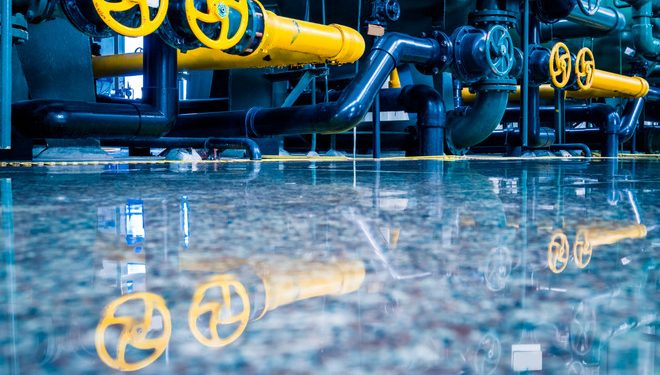Introduction
In the contemporary industrial world, the maintenance and modification of pipeline systems are pivotal for ensuring uninterrupted operations. Industries ranging from oil and gas to water treatment and chemical processing rely heavily on efficient pipeline systems. To keep these systems running smoothly without costly shutdowns, advanced techniques such as hot tapping and pipe freezing have been developed. This article delves into the intricacies of these techniques, their applications, and the benefits they bring to various industries.
Hot Tapping: An Overview
Hot tapping, or pressure tapping, is a specialised method that allows the connection of a new branch to an existing pipeline under pressure. This technique is invaluable because it eliminates the need for system shutdowns, thereby maintaining continuous operations.
Hot Tapping Process:
Assessment and Planning: Before initiating a hot tap, a thorough assessment of the pipeline’s condition and operating parameters is conducted. This ensures that the procedure can be performed safely and effectively.
Equipment Installation: The hot tapping machine, which includes a tapping fitting, valve, and a drilling apparatus, is securely installed on the pipeline.
Drilling: Using the drilling apparatus, a hole is cut into the pipeline. The valve controls the flow and ensures that the contents do not escape during the drilling process.
Connecting the Branch: Once the hole is drilled, the new branch pipe is connected, and the valve is opened to allow the flow through the new connection.
Advantages of Hot Tapping:
Continuous Operation: Hot tapping allows for modifications and connections to be made without interrupting the flow within the pipeline, ensuring uninterrupted production.
Cost Efficiency: By avoiding the need for shutdowns, hot tapping saves significant costs associated with halted operations and the subsequent restart process.
Safety: When executed properly, hot tapping is a safe method that minimises the risk of exposure to hazardous materials.
Pipe Freezing: An Effective Isolation Technique
Pipe freezing is another advanced method used in pipeline maintenance. This technique involves creating a solid ice plug within the pipeline to isolate a section for maintenance or repair. The ice plug acts as a temporary barrier, allowing for work to be carried out without draining the entire system.
Pipe Freezing Process:
Preparation: The section of the pipeline to be frozen is identified, and preparations are made to ensure a safe and effective freeze.
Application of Freezing Agent: A freezing agent, typically liquid nitrogen or CO2, is applied to the external surface of the pipe using a jacket or coil. This causes the liquid inside the pipe to freeze, forming an ice plug.
Maintenance Work: With the ice plug in place, the isolated section of the pipeline can be safely accessed for maintenance or repairs.
Thawing: After the maintenance work is completed, the application of the freezing agent is stopped, and the ice plug is allowed to melt naturally, restoring normal flow within the pipeline.
Advantages of Pipe Freezing:
Non-Invasive: Pipe freezing does not require cutting into the pipeline, making it a minimally invasive isolation technique.
Versatility: This method is suitable for a wide range of pipe sizes and materials, making it adaptable to various industrial applications.
Efficiency: Pipe freezing allows for quick isolation and maintenance, reducing downtime and improving overall operational efficiency.
Applications Across Industries
Hot tapping and pipe freezing are utilised across numerous industries, each benefiting from the unique advantages these techniques offer.
Oil and Gas Industry:
In the oil and gas sector, maintaining continuous production is crucial. Hot tapping facilitates the addition of new connections or the installation of monitoring equipment without interrupting the flow of hydrocarbons. Pipe freezing provides a reliable method for isolating sections of the pipeline for maintenance, ensuring safety and operational efficiency in an industry where downtime can be extremely costly.
Water Supply Systems:
Municipal water systems greatly benefit from these advanced techniques. Hot tapping allows for the expansion of water distribution networks by adding new branches without disrupting the supply to existing users. Pipe freezing is particularly useful in emergency repair situations, allowing for quick isolation of damaged sections to prevent water loss and service interruptions.
Chemical Processing Plants:
In chemical processing, ensuring continuous flow and safety is paramount. Hot tapping facilitates the installation of new connections or instrumentation, while pipe freezing provides a safe method for isolating sections of the pipeline handling hazardous chemicals. This ensures maintenance can be performed without exposing workers to dangerous substances.
Safety Considerations
While hot tapping and pipe freezing offer numerous benefits, it is essential to adhere to strict safety protocols to mitigate potential risks associated with these techniques.
Hot Tapping Safety Measures:
Pressure Management: Ensuring that the pipeline pressure is within safe limits is crucial to prevent blowouts during hot tapping operations.
Material Compatibility: The materials used for the hot tap fittings and valves must be compatible with the pipeline contents to avoid chemical reactions or corrosion.
Leak Testing: Conducting rigorous leak tests before and after the operation helps ensure the integrity of the connection and prevents leaks.
Pipe Freezing Safety Measures:
Controlled Freezing: Monitoring the freezing process closely ensures that the ice plug forms uniformly, preventing damage to the pipeline.
Safe Thawing: Controlled thawing of the ice plug prevents thermal shock, which could cause fractures or leaks in the pipeline.
Protective Equipment: Workers must use appropriate protective gear when handling refrigerants like liquid nitrogen to prevent frostbite and other injuries.
Conclusion
Hot tapping and pipe freezing are critical techniques in the field of pipeline maintenance, offering unparalleled benefits in terms of efficiency, cost savings, and safety. By allowing for modifications and repairs without disrupting operations, these methods ensure that industries can maintain continuous production and minimise downtime. As technology advances, these techniques will continue to evolve, providing even more effective and reliable solutions for pipeline management. Embracing these advanced methods is essential for industries aiming to optimise their operations and maintain the highest standards of safety and efficiency.















